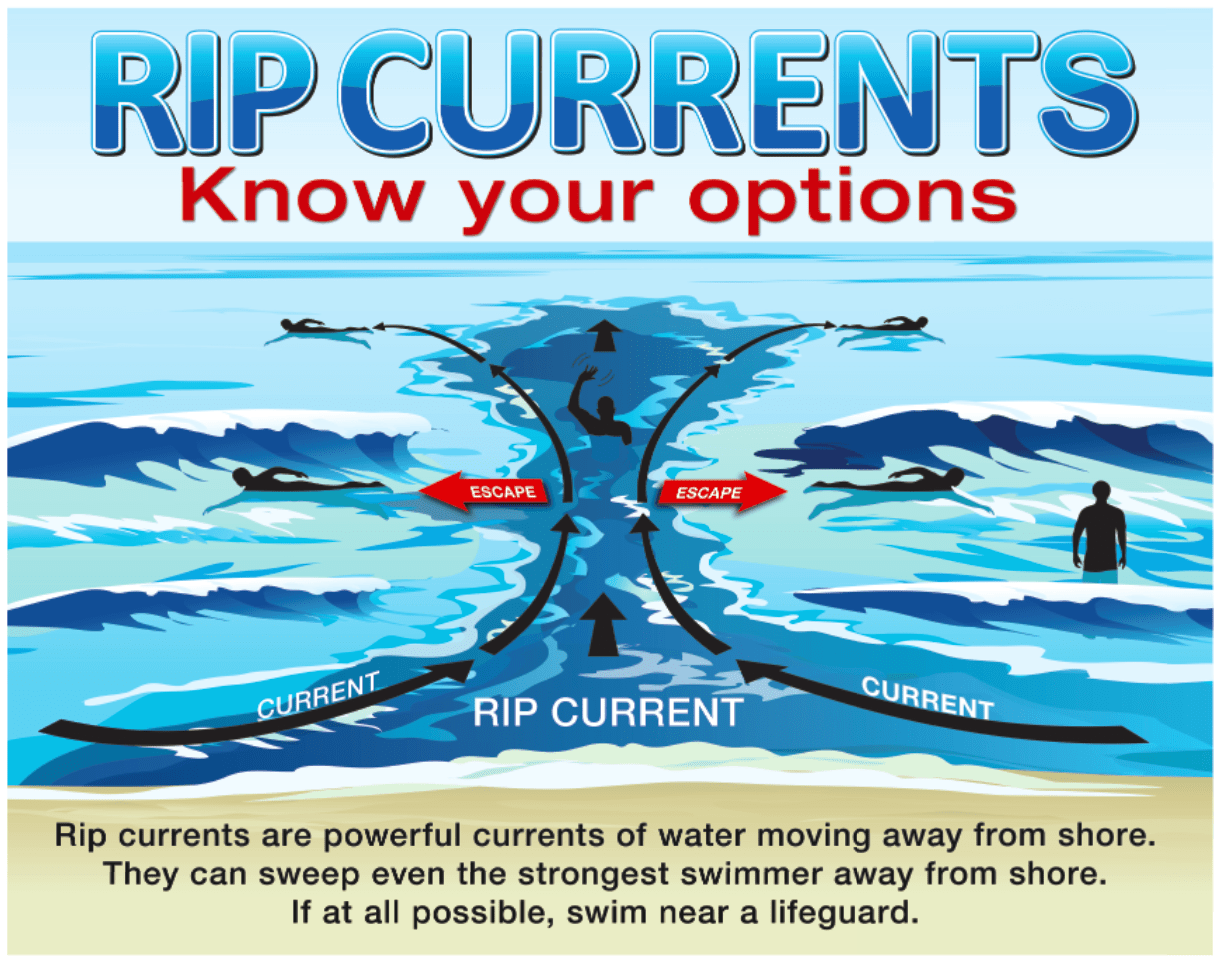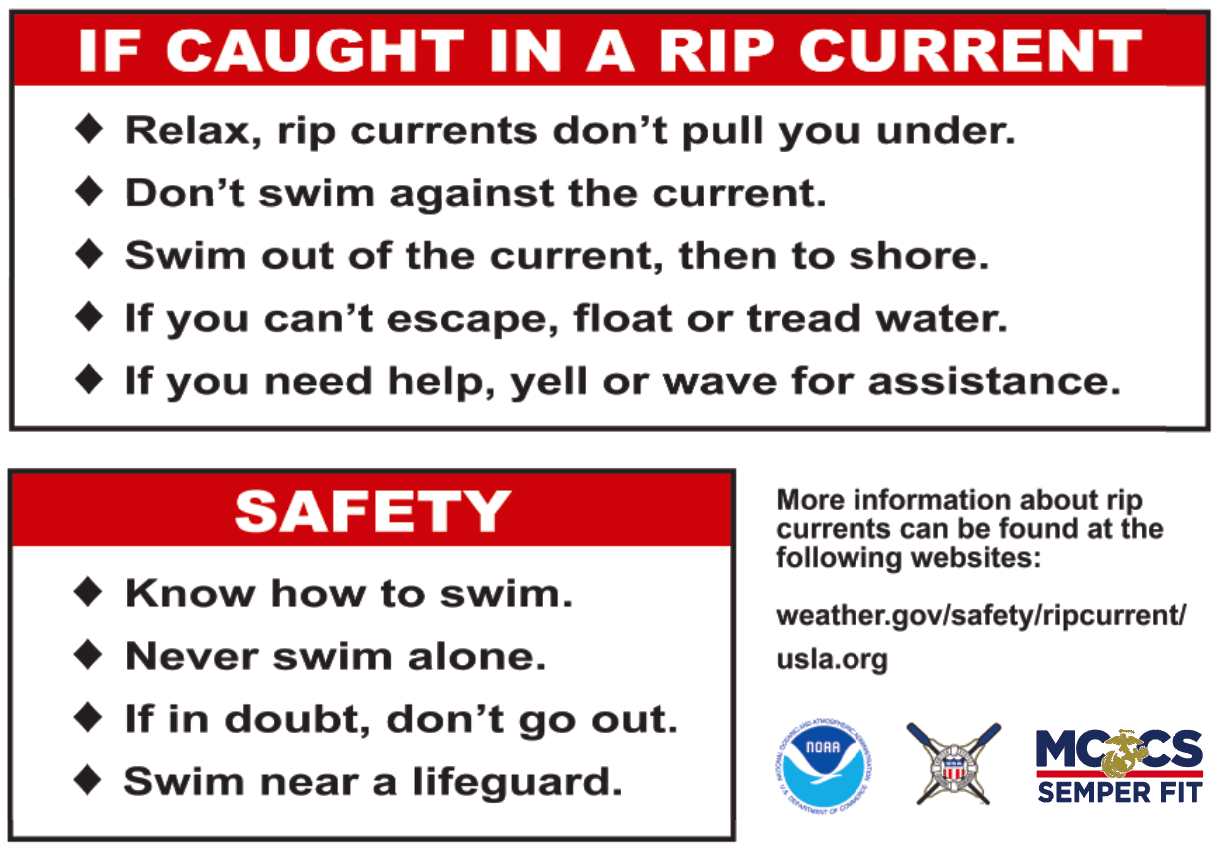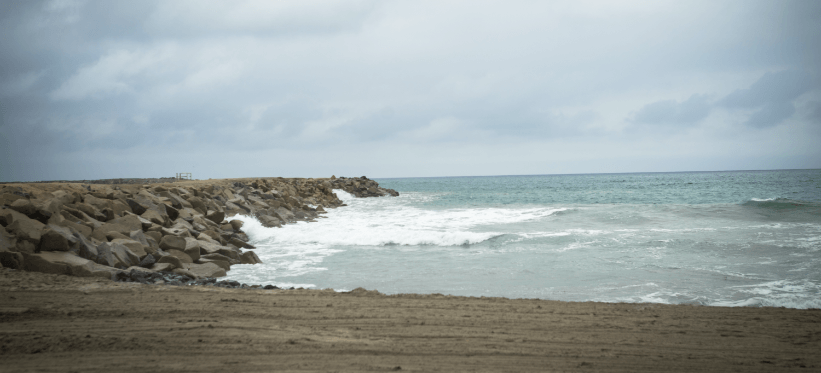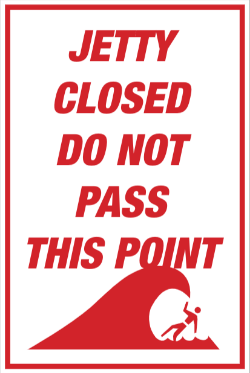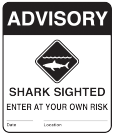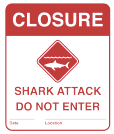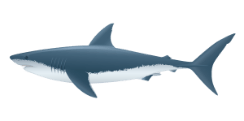Rip Currents are narrow, river-like currents that have been fed by waves in succession. The water at the shoreline finds a low point in the ocean bottom and forms a rip current at that given point out past the surf line. Rip currents can also be formed at the base of a jetty like Del Mar, or the side of a reef like at “Churches” (San Onofre). If you’re caught in a rip current, DON’T PANIC! Swim parallel to the shoreline until you feel you’re out of the current, and then swim toward the beach. Rip currents occur at both Del Mar and San Onofre Beaches. Check with lifeguards to locate where recent rip currents have been forming.
Black & White Checkered Flag
Swimming/Bodyboarding zones are designated by this flag. When these checkered flags are posted, swimming, bodyboarding, and wading are allowed between the checkered flags only.
Blackball Flag
If this flag is flying within the swimming/bodyboarding zone, no surfing or other hardboards are allowed. Surfing and other hardboard sports are allowed outside the swimming/bodyboarding zone.
Red Flag
This flag indicates the beach is closed for swimming. This could be the result of contamination, heavy surf, fog, or dangerous areas. Check with lifeguards for updates.
Yellow Flag
This flag indicates to exercise caution. Public announcements will be made, advising beach users of conditions. Check with lifeguards for updates.
- Stay off the rock jetty when the surf is breaking over the top of the rocks. Obey the signage placed during high surf events.
- Never turn your back to the ocean. You may be swept off the rock jetty.
- Open crevasses and sinkholes between large boulders create stepping/slipping hazards.
- Slippery rock surfaces caused by sea spray create hazards. Please stay on the paved areas of the rock jetty.
Burn Injuries
Burns range from minor to severe, whether it's sunburn or stepping on hot coals. Putting on SPF 45 or higher sunscreen and wearing protective clothing, such as hats and long-sleeve shirts, can prevent sunburns. To avoid other more severe burns, please properly dispose of hot coals and keep children 10 feet away from fire pits at all times. Open fires are prohibited on the beach; please have fires in designated areas only.
Head & Neck Injuries
These injuries can occur in numerous ways and can cause temporary or permanent paralysis. Head and neck injuries can be prevented by not diving in shallow water. Know your limitations – “When in doubt, don’t go out!”
Advisory – Shark Sighted
Issued by lifeguards when there is a confirmed sighting of a nonaggressive shark.
Warning – Aggressive Shark
Issued by lifeguards when there is a confirmed sighting of atypical and potentially aggressive shark behavior.
Closure – Shark Attack
Issued by lifeguards following a shark attack or confirmed sighting of aggressive shark behavior.
Jellyfish
Watch for jellyfish both in the water and on the sand. Even a tentacle that has been separated from its jellyfish and washed ashore can sting. If you get stung, remove tentacles from skin. DO NOT wash with fresh water; instead, go straight to the nearest lifeguard where they will treat the sting with a saltwater solution to kill the nematocysts (stinging cells) and relieve the pain.
Sharks
If you see a shark that is acting aggressively such as: moving rapidly toward you and rapidly moving away, circling, opening and closing its mouth, or chasing prey, keep your eyes on the shark and make sure it knows you are watching it. Then swim slowly and calmly back to the beach while maintaining eye contact with the shark. If you encounter a shark that is approaching very close to you or bites you, hit the shark in the eye, in the nose, or stick your hands in its gills.
Stingrays
If stung seek lifeguard assistance immediately. Treatment consists of hot water (heat decreases the pain drastically) and antiseptic wound cleaning. When the venom has been deactivated by the hot water, routine wound care is a priority. Stingrays can be avoided by shuffling one’s feet along the sandy bottom, giving time for the stingray to move away.
Can occur from many sources, including sewage spills or excess runoff from streets during storms. After significant rainfall, it is recommended that you do not enter the ocean for at least 72 hours. Contaminated areas are posted by lifeguards, but to ensure up-to-date information, check with the lifeguards for water conditions.
BEACH RULES
NO PETS
NO GLASS
NO PERSONAL VEHICLES
NO OPEN CAMPFIRES
DISPOSE OF BBQ COALS CORRECTLY
EXTINGUISH FIRES IN FIRE RINGS
STAY OUT OF POSTED ENVIRONMENTAL AREAS
Contact Information
Ocean Lifeguards
Del Mar Beach Lifeguard Station: 7607252703
Del Mar Beach Lifeguard Station: 7607252078
Lifeguard Chief: 7607250457
San Onofre Lifeguard Station: 7607257437
San Onofre Lifeguard Station: 7607257979
Del Mar Beach Lifeguard Station
BLDG 21591
San Onofre Lifeguard Station
BLDG 510813
Lifeguard Hours
| Daily | 8am-Sunset |







